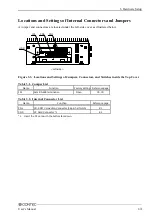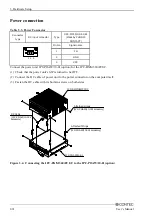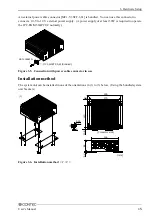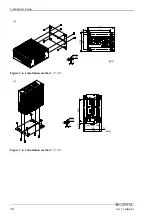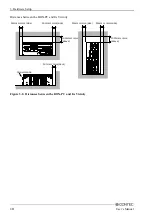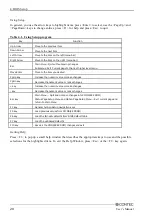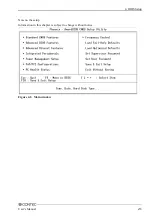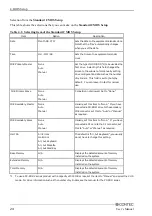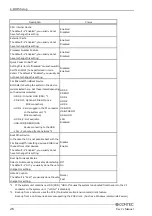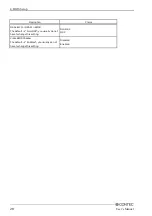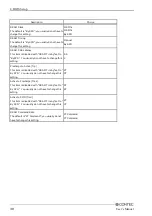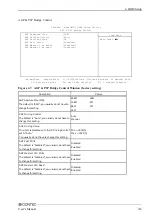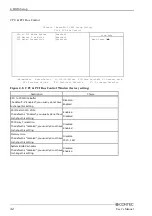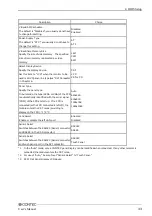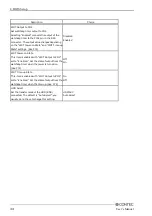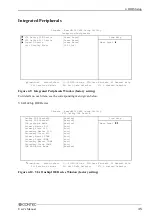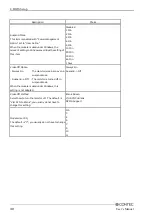
4. BIOS Setup
26
User’s Manual
Description
Choice
CPU internal Cache
The default is "Enabled"; you usually do not
have to change this setting.
Enabled
Disabled
External Cache
The default is "Enabled"; you usually do not
have to change this setting.
Enabled
Disabled
Processor Number Feature
The default is "Enabled"; you usually do not
have to change this setting.
Enabled
Disabled
Quick Power On Self Test
Setting this item to "Disabled" causes Power On
Self Test (POST) to be performed in more
detail. The default is "Enabled"; you usually do
not have to change this setting.
Disabled
Enabled
First/Second/Third/Boot Device
BIOS starts booting the system in the device
order selected here. Set these items depending
on the devices connected.
- HDD-0 : Internal HDD (SDD) *1
- CD-ROM : Optional CD-ROM drive
(IDE connection)
- HDD-1 : Card plugged in the CF connector
on the system unit *1
(IDE connection)
- HDD-2/3 : Not available
- USB-FDD/CDROM/HDD :
Device connecting to the USB
- LAN : For boot-up from a network *2
HDD-0
CDROM
HDD-1
HDD-2
HDD-3
USB-FDD
USB-CDROM
USB-HDD
LAN
Disabled
Boot Other Device
In the case that it is not possible boot with the
First/Second/Third setting devices, BIOS tries
the boot from other devices.
The default is "Enabled"; you usually do not
have to change this setting.
Disable
Enable
Boot Up NumLock Status
Select a NumLock key status at system startup.
The default is "On"; you usually do not have to
change this setting.
Off
On
Gate A20 option
The default is "Fast"; you usually do not have to
change this setting.
Nomal
Fast
*1
If the system unit contains no HDD (SDD), "HDD-0" causes the system to be booted from the card in the CF
connector on the system unit. ("HDD-1" is disabled.)
*2
Boot-up from a network uses the PXE (Pre-Boot eXecution Environment) client feature.
Boot-up from a LAN requires a server supporting the PXE client. (Such as a Windows remote install server)


